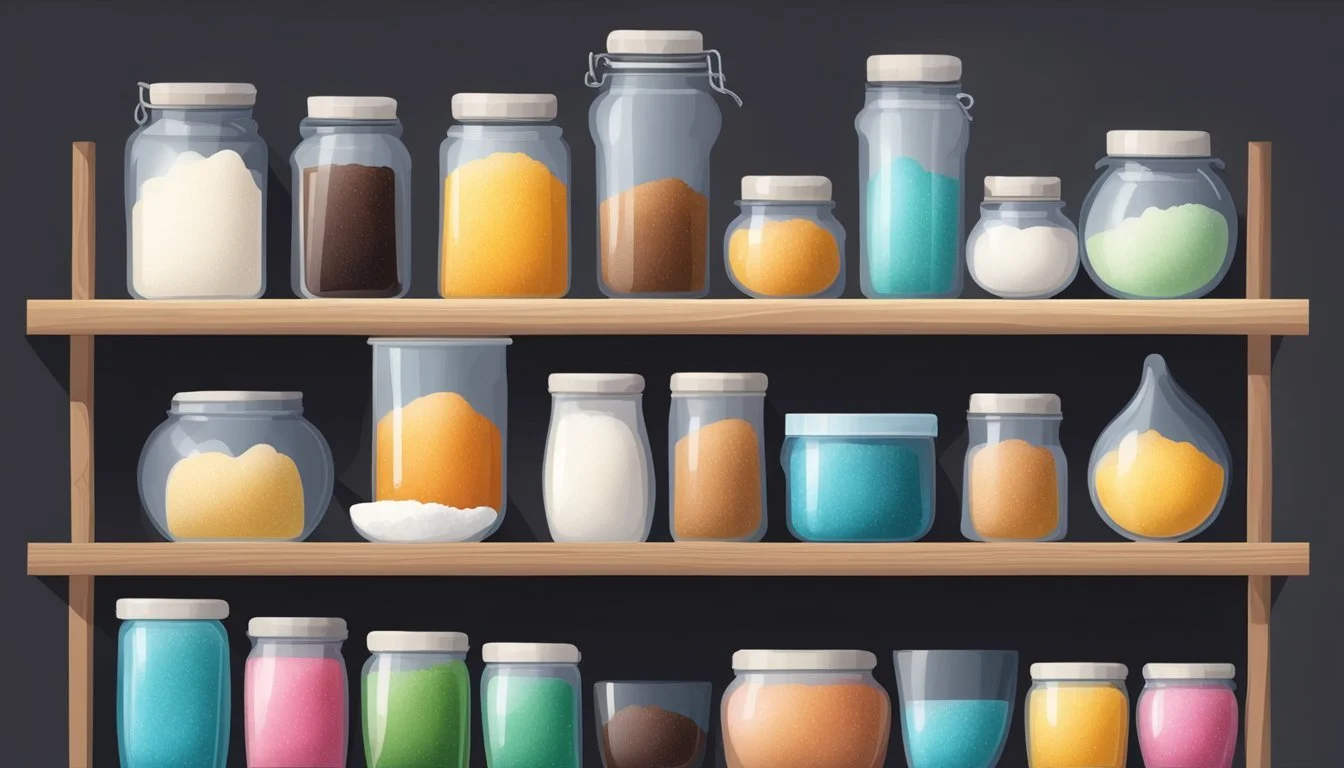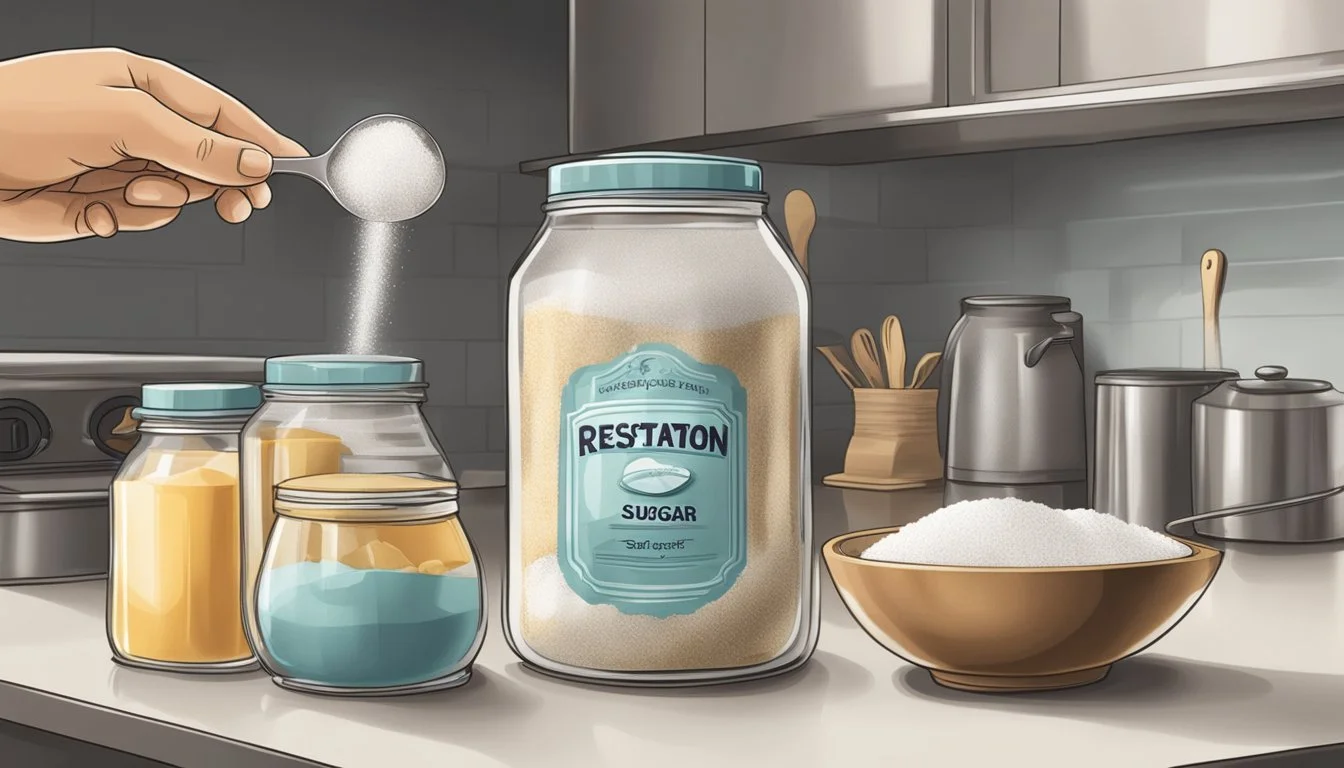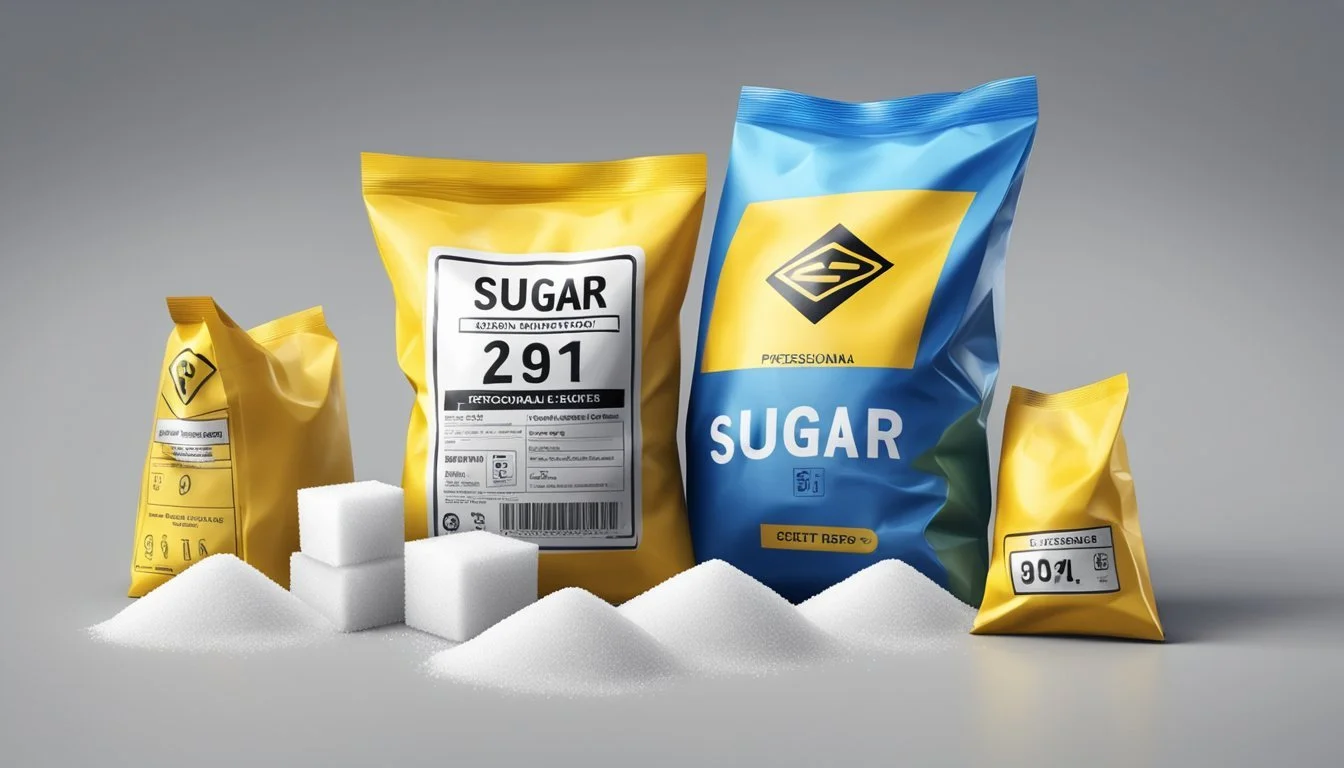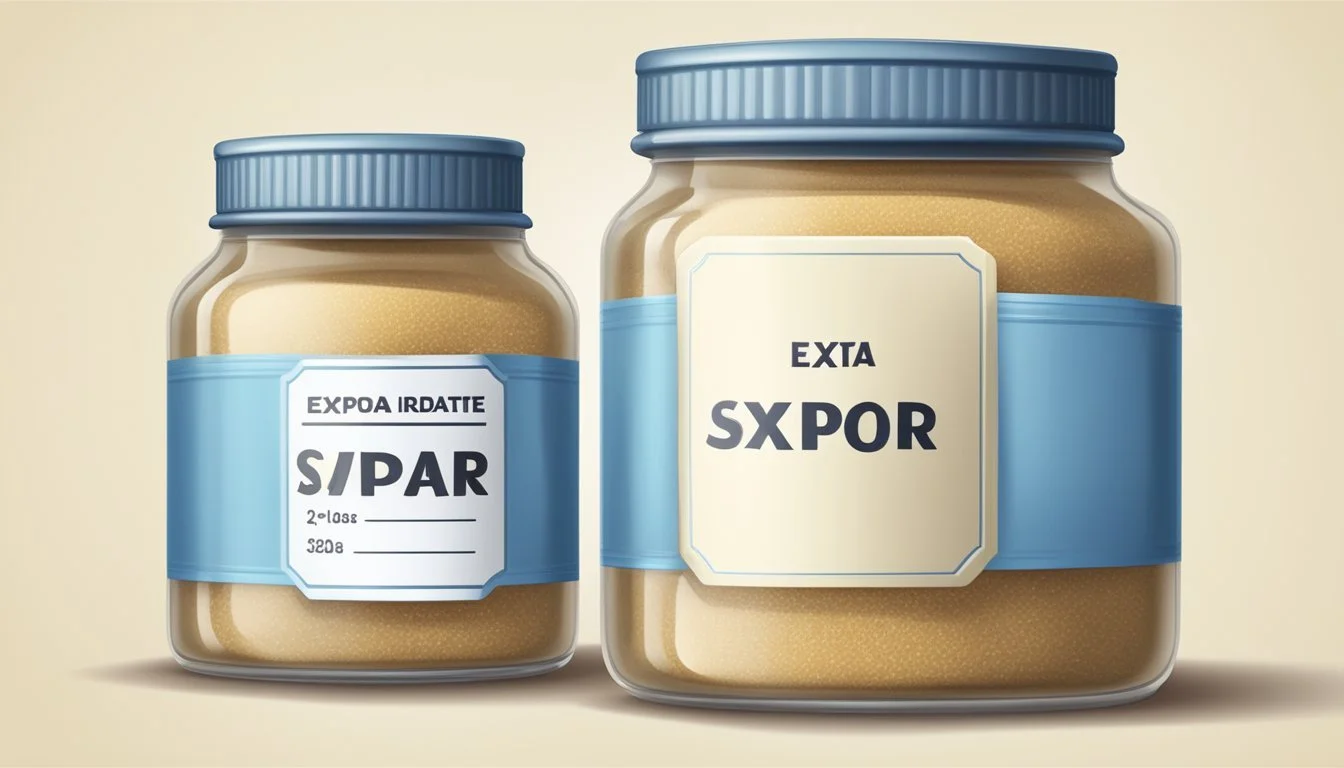Does Sugar Go Bad?
Understanding Shelf Life and Storage Tips
Sugar, a common household staple known for its sweetening properties, is surrounded by questions about its shelf life. Unlike many food products, sugar does not support microbial growth, which lends to its reputation for having an indefinite shelf life. Properly stored, it defies the usual concerns about spoilage due to bacteria, mold, or yeast, all of which require water to thrive, and sugar's lack of moisture prevents these organisms from growing.
However, while sugar itself does not spoil in the traditional sense, it can deteriorate in quality if not stored under the right conditions. Exposure to moisture can lead to clumping, and the presence of insects or contaminants can make it unsuitable for consumption. Sugar's longevity makes it a reliable preservative for other foods, contributing to the extended shelf life of products such as jellies and peanut butter.
Storage plays a pivotal role in maintaining sugar's quality. Keeping it in a cool, dry place away from direct sunlight ensures that the granules remain free-flowing and retain their flavor. Most manufacturers recommend using sugar within two years to enjoy its best quality, even though it remains safe for consumption beyond this time frame.
The Basics of Sugar and Shelf Life
When considering the preservation of sugar, it's essential to understand that sugar itself is a stable commodity with an extensive shelf life. Factors such as storage conditions and the type of sugar play pivotal roles in maintaining its quality over time.
Types of Sugar
Granulated White Sugar: Often has an indefinite shelf life if kept dry and sealed from contaminants.
Brown Sugar: Prone to hardening but can last indefinitely if stored in a moisture-free environment.
Powdered Sugar: Also has a long shelf life, similar to white sugar, under proper storage conditions.
Understanding Expiration Dates
Expiration Date: Rarely applicable to sugar, as sugar doesn't spoil but can lose quality.
Sell-by Dates: Not an indicator of safety but rather a guide for retailers.
Best-by Date: Suggests when the product may start to diminish in quality; for sugar, this is typically two years but is not indicative of spoilage.
Factors Affecting Sugar Longevity
Sugar's shelf life is typically extensive, but certain factors can significantly shorten its longevity. By understanding these elements, one can better preserve the quality and usability of sugar.
Moisture and Sugar Storage
Moisture is the enemy of sugar storage. When sugar comes into contact with moisture, it begins to clump and may even harden. To prevent these issues, it is imperative to store sugar in an airtight container which will shield it from humidity. Cool, dry places are ideal for storage as they minimize the risk of sugar absorbing moisture from the environment.
Heat and Light Exposure
Exposure to heat and light can also diminish the quality of sugar. Prolonged exposure to a heat source can cause sugar to melt or harden, while a light source can accelerate degradation. Thus, it's recommended to keep sugar away from any appliances or areas that may generate heat or are prone to sunlight.
Air Exposure and Packaging
Finally, the exposure to air can impact sugar's quality over time. Air can introduce moisture and other contaminants. Maintaining sugar in airtight containers not only prevents moisture contamination but also keeps pests out. Packaging is crucial; ensuring that the seal is tight once opened will help preserve the sugar's consistency and prevent it from turning into clumps.
Proper Storage Techniques
Proper storage of sugar is critical to maintain its quality and extend its shelf life. Moisture and temperature control are the linchpins of effective sugar storage.
Storing Sugar in Pantry
For everyday use, granulated white sugar should be kept in the pantry in a moisture-proof container. An airtight container, like a canister with a secure lid, shields sugar from external odors and humidity. The pantry should ideally provide a cool and dry place away from direct sunlight or any heat sources.
Container Type: Moisture-proof, airtight canister
Location: Pantry, away from sunlight and heat
Repackaging for Extended Shelf Life
When purchasing sugar in bulk, repackaging into smaller amounts can promote longevity. Transfer sugar to food storage containers that are airtight and moisture-proof to prevent clumping. Food-grade plastic bags or canning jars can serve as excellent repackaging materials for this purpose.
Materials: Food-grade plastic bags, canning jars
Method: Divide into smaller portions, seal tightly
Best Practices for Humidity and Temperature Control
Storing sugar at a stable room temperature away from drastic changes in humidity and temperature is pivotal. Consistency is key; sudden fluctuations can compromise sugar's quality. Use containers that ward off moisture ingress to maintain a dry environment for the sugar.
Temperature: Steady room temperature
Humidity: Containers should be moisture-resistant
Identifying Spoiled Sugar
Sugar, while not prone to spoilage like many perishable items, can still encounter issues that signal whether it's not in its best condition for use. In this section, crucial markers such as visual changes, odor, and infestation will be discussed to assess sugar's quality.
Visual and Textural Clues
Sugar's appearance can inform you a lot about its quality. For instance, white granulated sugar should have a crystalline form with no clumps. Clumps could indicate exposure to moisture, although they can often be broken apart without impacting the sugar's usability. However, the presence of any mold or unusual coloration strongly suggests contamination and the sugar should not be used.
Odor and Flavor Changes
In its optimal state, sugar should not emit any distinguishable smell. If one finds an off-smell emanating from the sugar, this is indicative of spoilage or possible contamination with other substances, especially if it has been stored near strong-smelling products. A change in flavor, from sweet to bland or strange-tasting, also flags that the sugar may have absorbed odors or moisture and may not retain its intended quality.
Pest and Insect Infestation
The presence of pantry bugs, ants, or any other insects in the sugar serves as a clear sign of spoilage. These pests are attracted to the sweetness of sugar, and their presence means the sugar has been compromised and should be discarded. It's critical to store sugar in airtight containers to deter such infestations and maintain its purity.
Restoration and Use of Sugar
In this section, readers will learn specific methods to restore sugar to its usable state, determine its usability, and discover creative ways to use sugar that has clumped together.
Softening Hardened Sugar
When sugar is exposed to moisture, it can harden. Here are specific methods to soften different types of sugar:
Brown Sugar:
Place a piece of bread or a slice of apple in the container with the hardened brown sugar and seal it tightly. The moisture from these items will help soften the sugar within a day.
Microwave brown sugar in a microwave-safe bag with a small amount of water for a few seconds until it's soft.
For lumpy granulated or raw sugar, one can put it into a food processor and pulse until it breaks back down into fine crystals.
Determining Usability
To determine if sugar is still usable, consider the following:
Look: Inspect the sugar for any discoloration or presence of insects.
Smell: Sugar should not have a smell. Any off odors suggest contamination.
Sugar does not spoil, but if the quality has degraded or if it has absorbed any foreign smells or substances, it may impact the flavor of the food it is used in.
Creative Uses for Clumpy Sugar
Clumpy sugar need not be wasted; it has its uses:
Baking: Lumpy granulated sugar can be used in recipes like cookies or cakes where it will dissolve during the baking process.
Decoration: Large sugar lumps can be ground down to make a coarse sugar perfect for decorating baked goods.
By following these practices, individuals can ensure minimal waste and maintain the integrity of their sugar, whether it's granulated, powdered, brown, or raw.
Health and Safety Considerations
When discussing the preservation and safety of sugar, it is crucial to understand its resistance to microbial growth and its role as a preservative.
Microbial Growth and Sugar Safety
Sugar itself is resistant to microbial growth due to its low moisture content. Microorganisms like bacteria, yeast, and molds require moisture to thrive, and in its dry form, sugar provides an inhospitable environment for such entities. Consequently, sugar does not spoil and is considered safe to eat even after extended periods, provided it has been stored correctly—away from moisture and in an airtight container—to maintain freshness.
The Role of Sugar as a Preservative
Sugar acts as an effective preservative by reducing water activity in food items, which inhibits the growth of spoilage-causing microbes. The process of sugar preservation, traditionally utilized in jams, jellies, and certain confections, enhances food safety by creating conditions that deter spoilage and extend the shelf life of perishable goods. Its preservative properties are not only vital in food processing but also in maintaining the safety and freshness of homemade preserves.
Additional Tips and FAQs
Preserving sugar's quality and extending its shelf life requires attention to storage conditions. This section examines the nuances of sugar maintenance and addresses frequent inquiries on sugar preservation.
Sugar Longevity in Different Climates
Sugar's longevity can be influenced by the climate in which it is stored. In humid climates, sugar is more prone to absorbing moisture, which can lead to clumping. Securing the sugar in airtight containers and including food-safe desiccants can mitigate this issue. Conversely, in dry climates, sugar maintains its granular consistency longer but should still be kept away from any heat sources that might hasten its degrading process. Refrigeration is seldom required for sugar, but if one resides in an extremely humid region, refrigerating it in an airtight container could help extend its longevity.
Table 1: Sugar Storage Recommendations by Climate
Climate Type Storage Conditions Expected Shelf Life Humid Airtight container, cool area, desiccant Up to 2 years Dry Airtight container, cool area Indefinite
Coping with Common Sugar Issues
The most prevalent sugar issue is clumping which commonly results from moisture exposure. To resolve this, one can gently break the clumps apart or use them as-is in recipes where they will dissolve. To prevent clumping, store sugar with a slice of marshmallow, which helps maintain moisture without causing clumping. If sugar becomes hard, the consumer can restore its free-flowing nature by microwaving it in short intervals with a moist paper towel over it. As for the expiration of sugar, while it doesn't spoil, its quality may degrade over time. Therefore, it isn't about safety but rather ensuring optimal flavor and texture.
Frequently Asked Questions (FAQs)
Can sugar be stored in the refrigerator? While not necessary for dry climates, sugar can be stored in the refrigerator in an airtight container in very humid environments.
How to check if sugar is still good? Sugar doesn't expire in the traditional sense, but if it emits an off odor or changes in color, this might indicate contamination from other substances and it should be discarded.
Conclusion
Sugar, due its unique properties, is remarkable for its indefinite shelf life when stored properly. Its composition makes it resistant to the growth of bacteria and molds which typically spoil food products. As a natural preservative, sugar retains the quality of various items through osmosis, drawing the moisture that bacteria need to survive.
Storage and Longevity: To maintain optimal quality, sugar should be kept in a cool, dry place, ideally in an airtight container. This method of storage ensures the product’s longevity and prevents the aging process that could lead to hardening or the formation of crystals.
Quality Over Time: Although sugar does not spoil, its flavor and texture may degrade slightly over time. It is pertinent to note that such changes do not pose a safety concern and sugar still remains safe for consumption.
Handling Altered Sugar:
Hardened sugar can be loosened by gentle warming or breaking it down.
Crystallized sugar can be smoothened by grinding.
In essence, the longevity and preservation qualities of sugar make it a reliable product that stands the test of time. Its propensity to last almost indefinitely while maintaining safety for consumption reiterates the efficiency of sugar as an enduring dietary staple.







